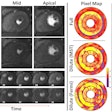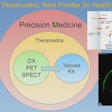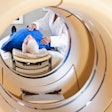Combining CT with FDG-PET can significantly enhance the outline of tumors in head and neck cancer patients and influence treatment options compared to CT alone, according to research presented Friday at the Cancer Imaging and Radiation Therapy Symposium in Atlanta.
Researchers from Utrecht University Medical Center in the Netherlands conducted a trial of 327 patients who were treated with intensity-modulated radiation therapy (IMRT) for head and neck cancer.
By combining CT and FDG-PET, the images showed a change in the delineation of the tumor in one of three patients (33%), resulting in 10% of patients having their treatment changed and 33% having their treatment adjusted.
In 55 patients (17%), the primary tumor was not visible on the CT scan alone, mostly due to dental inlays.
Study co-author Dr. Homan Dehnad said he and his colleagues never expected such an influence on treatment options for patients, adding that every facility that deals with head and neck cancer should be equipped with multi-imaging capabilities.
The symposium is co-sponsored by the American Society for Radiation Oncology (ASTRO) and RSNA.




















